Idyllic Etajima: Inland Sea Getaway
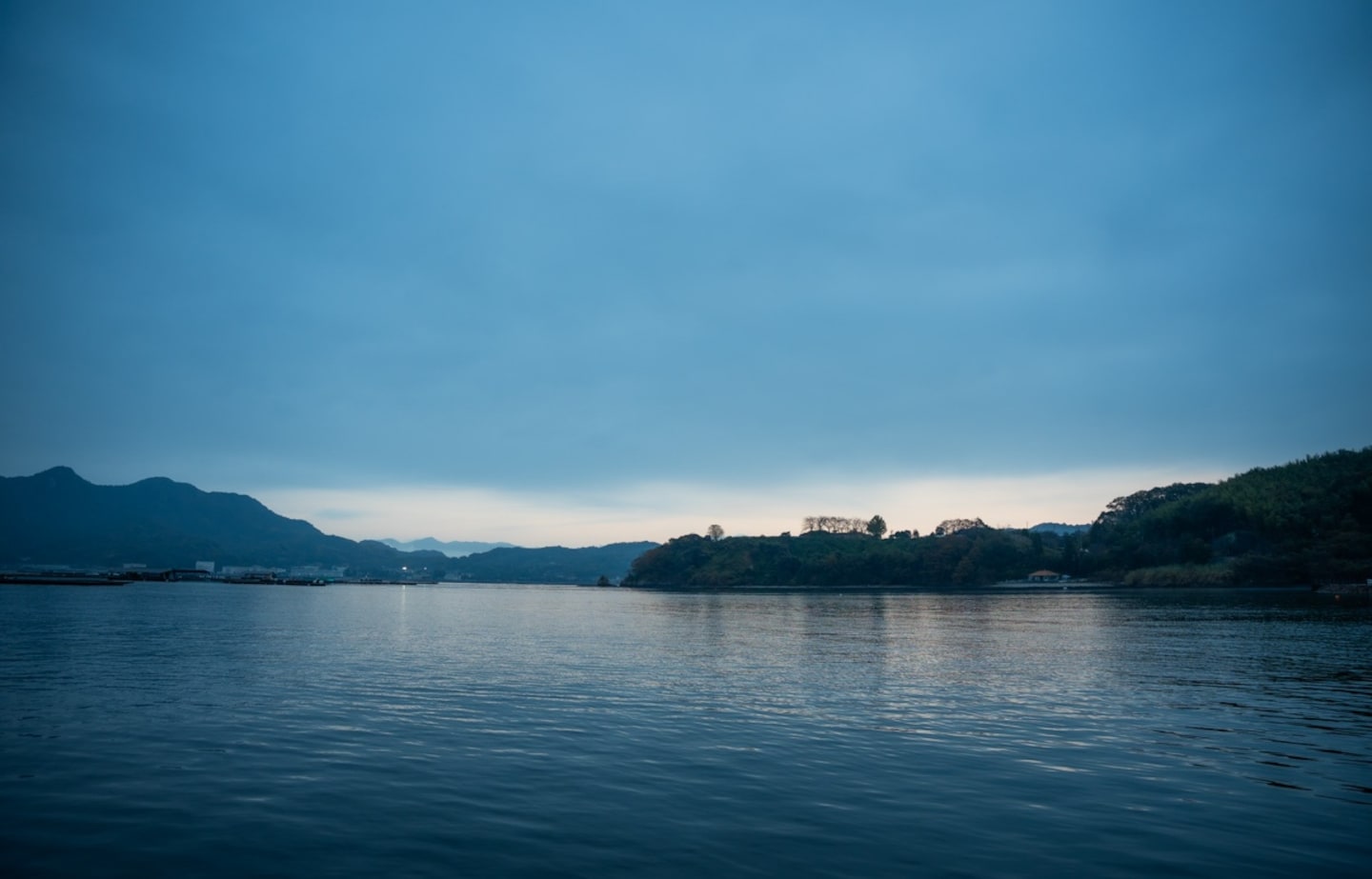
Etajima is the fourth largest island in the Seto Inland Sea, but it tends to fly under the radar of most travelers, making it an ideal location for a relaxing getaway. Louise George Kittaka shares her recommendations for discovering the region’s charms and fully savoring the laidback pace of island time. (Photo courtesy of Regional Branding
By Louise George Kittaka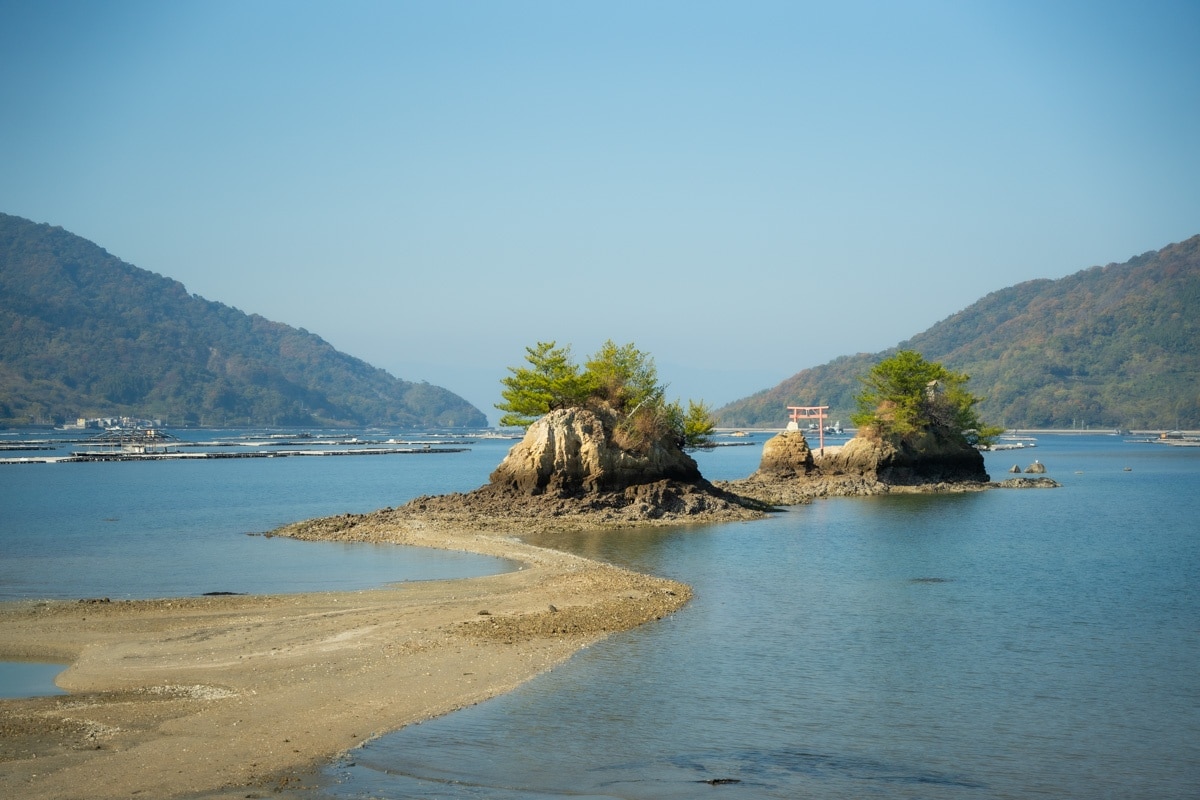
Full of history and natural beauty, Etajima is the perfect seaside getaway. (Photo courtesy of Regional Branding Institute Co., Ltd.)
Easily reached by ferry from Hiroshima Port or by road via the Hayase Ohashi Bridge, Etajima has played a major role in Japanese naval history. It is the home of the academy which trains cadets and officers for the Japanese Maritime Self Defense Force (JMSDF). The academy moved here in 1888 from Tokyo, after it was thought that the cadets would focus more on their studies far away from the temptations of the capital! Today the island also offers a variety of recreational and leisure activities, including cycling, hiking, boat trips and hands-on experiences.
Etajima-sou: For your ultimate seaside stay
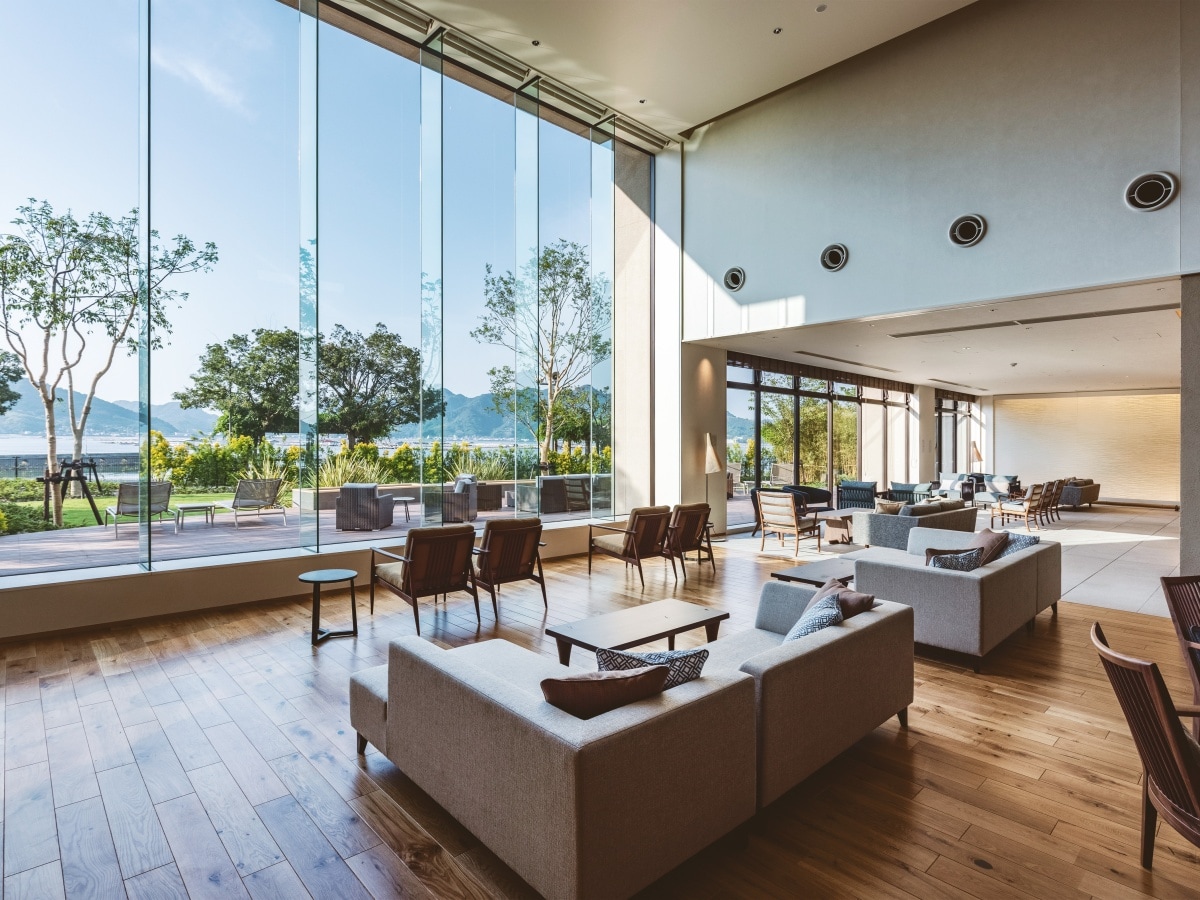
The welcoming lounge area at Etajima-sou offers views of the Seto Inland sea. (Photo courtesy of Etajima-sou)
Situated by a tranquil beach and featuring stunning sea views from its panoramic windows, Etajima-sou combines the best of traditional Japanese hospitality with modern luxury. Every detail at the hot spring hotel has been carefully designed to showcase the natural beauty of the Seto Inland Sea to visitors, while remaining deeply connected to the local community since opening in 2022.
“90 percent of our staff are local people from Etajima. They range from 18-year-olds who have newly graduated from high school to people in their 70s,” Executive Manager Yuki Takemoto says. The staff’s pride and delight in welcoming guests is palpable, and extensive bilingual guidance is available for international visitors.
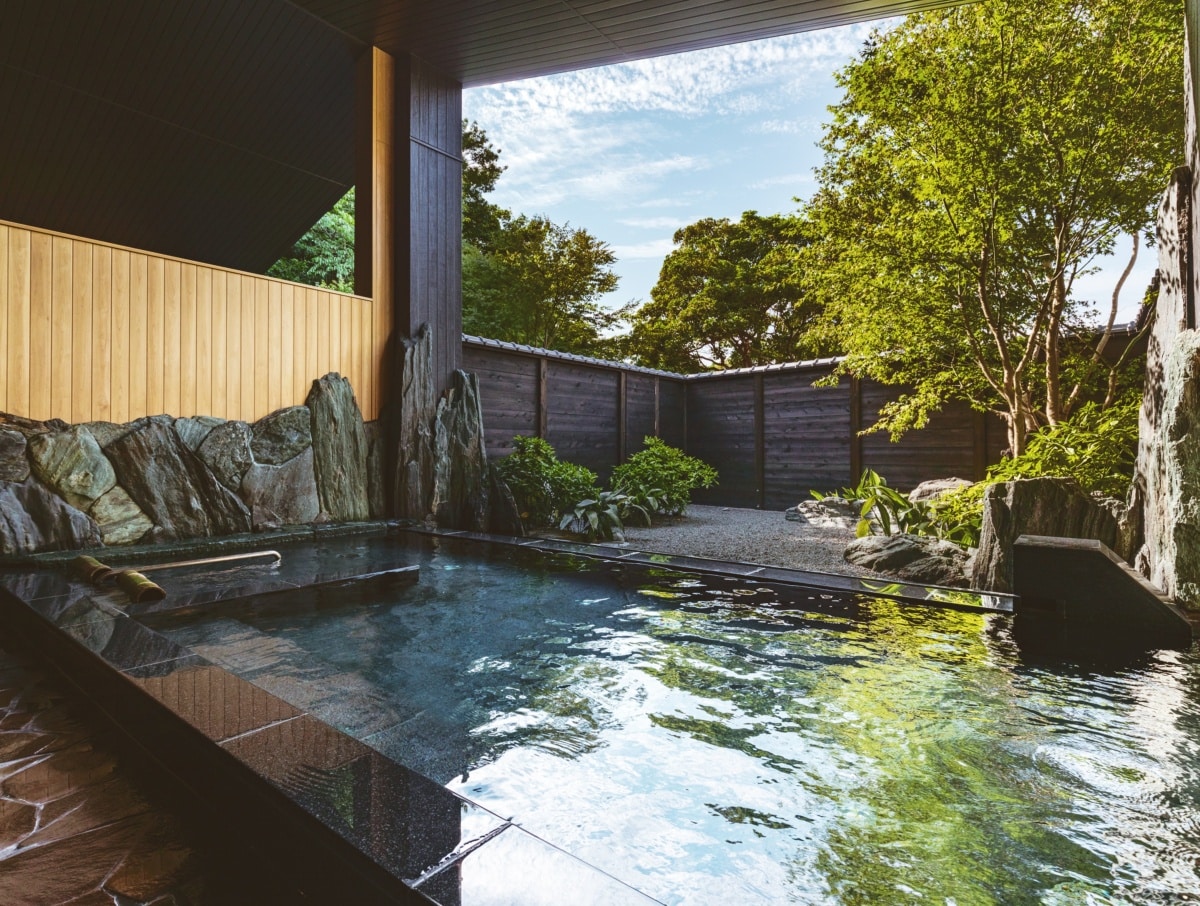
One of several relaxing hot spring baths for guests (Photo courtesy of Etajima-sou)
“During the warmer months, you can try SUP (stand-up paddle boarding) right in front of our hotel, and from May to September, you can observe umihotaru (sea fireflies), which emit a beautiful bluish-white glow when they move around in the sea,” says Takemoto. Staff can also help with arrangements for other activities during your stay.
Relaxation is a key part of the Etajima-sou experience and guests have a choice of several indoor and outdoor hot-spring baths, including some for private use. There is also a spa open to day-trippers adjacent to the main hotel. With a chef trained in France at the helm, Etajima-sou’s cuisine draws on regional ingredients such as oysters, mussels, olives, vegetables, citrus fruit and wild boar, ensuring that guests dine on the season’s best.
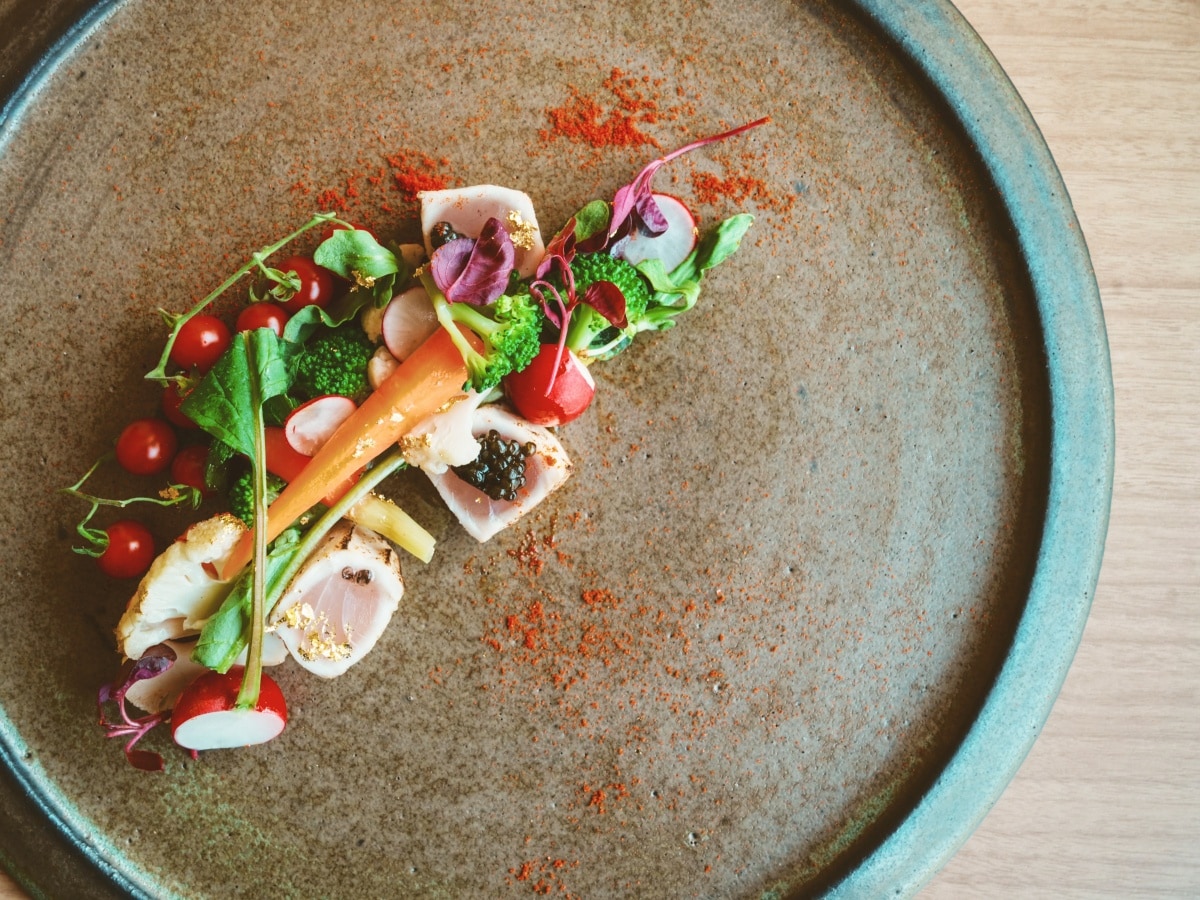
Local ingredients are showcased in the cuisine at Etajima-sou (Photo courtesy of Etajima-sou)
To reach Etajima-sou from Hiroshima Station, take a bus or tram for Hiroshima Port and then board a Seto Inland Sea Line ferry bound for Nomi Port. Get off at Nakamichi Port and it’s about a 12-minute walk to the hotel. Pick-up service is also available with advance notice.
Paper fabric: Tradition woven through time
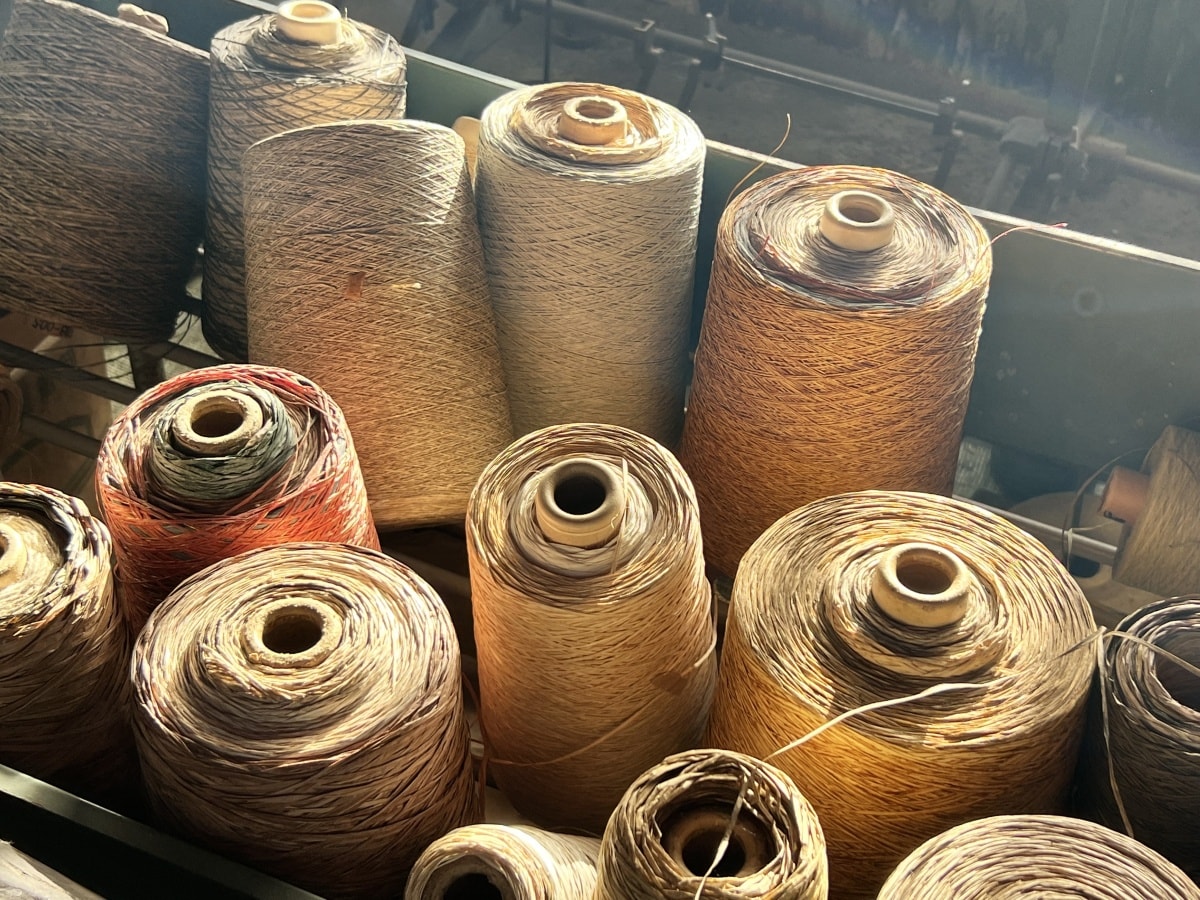
Rolls of paper thread ready for weaving at Tsushima Textiles (Photo courtesy of Louise George Kittaka)
Shifu (paper fabric) is woven with threads of traditional Japanese washi paper, and its finely-textured lattice pattern is prized for wallpaper. This durable yet lightweight paper fabric absorbs moisture, making it an ideal match for Japan’s varied climate, and it can last for more than 30 years with proper care. Decorative shifu panels created by local company Tsushima Textiles grace the interior of each guestroom at Etajima-sou, and visitors can learn more with a tour of the factory.
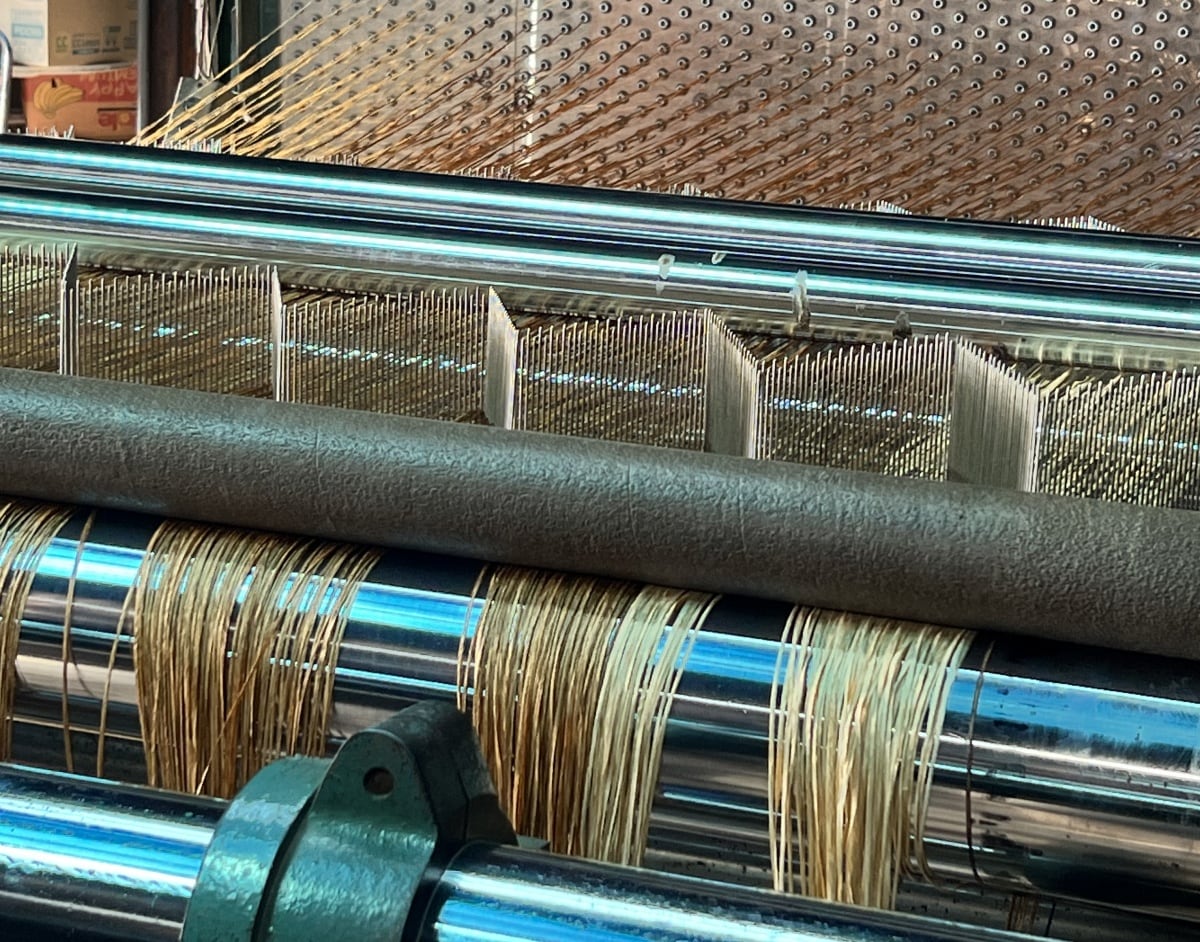
Tsushima Textiles is the only company in Etajima still using traditional methods to make shifu (Photo courtesy of Louise George Kittaka)
Etajima’s history of shifu dates back several hundred years, and there used to be a number of factories on the island. After peaking around 1800, however, production waned as modern technology overtook the labor-intensive methods. Today Tsushima Textiles is the sole producer on Etajima and one of only two companies in all of Japan still making shifu in the traditional way. Tsushima began production in 1890 and is now headed by Hisato Tsushima, the fifth generation of his family to run the business.

Visitors can try their hand at simple paper fabric crafts, such as this table mat (Photo courtesy of Louise George Kittaka)
“During our tours, we show visitors around the factory and then bring them to our showroom to see the completed shifu wallpaper and other items. Our goal is to increase activities to promote our shifu nationwide, as well as to people all around the world,” says Tsushima.
In Good Taste: Agritourism with Olives
Attracted by the opportunities and the lifestyle, Ryohei Mineo moved to Etajima to cultivate olives. (Photo courtesy of Setouchi Itonamisha LLC)
In contrast to the paper-weaving tradition, olive production is a very new addition to Etajima. Although the area was originally a center for agriculture, an aging population and more younger people leaving for the bigger cities led to an increase in abandoned farmland. The Seto Inland Sea's climate is ideal for olive cultivation, and in 2011 an initiative was set up to support the cultivation of olives as a specialty product.
Attracted by the opportunities and lifestyle, Ryohei Mineo of Setouchi Itonamisha moved to Etajima from Kanagawa Prefecture in 2016, joining a regional revitalization team recruited by the city of Etajima. Mineo grows olives and operates a facility called "Olive Labo Etajima," where visitors can get to know about all facets of olive production.

One of six locations around Etajima where Ryohei Mineo is cultivating olives (Photo courtesy of Setouchi Itonamisha LLC)
“We cultivate a total of 350 olive trees at six locations around Etajima. In addition to our own fruit, we also purchase olives grown by small-scale ‘citizen farmers,’ and produce and sell our olive oil and fresh olives for table use, along with olive teas produced from the leaves,” Mineo explains.
Mineo is also committed to the growth of local agritourism, including tours of the olive farms, olive branch wreath-making workshops and olive oil tasting experiences. He traveled to Italy to study olives and is certified as an olive oil taster by the Mediterranean Olive Oil Tasters Association.
“In the tasting experience, participants can compare the extra virgin olive oil produced here in Etajima with commercially-produced olive oil, and we suggest ways to enjoy olive oil paired with Japanese cuisine,” says Mineo, who hopes to see increasing revitalization through olives in this beautiful region he now calls home.
Beautiful nature, a variety of recreational opportunities, fascinating traditions and some of the most warm-hearted residents you could hope to meet: If you're planning to visit Hiroshima, why not include a relaxing stay on Etajima?



